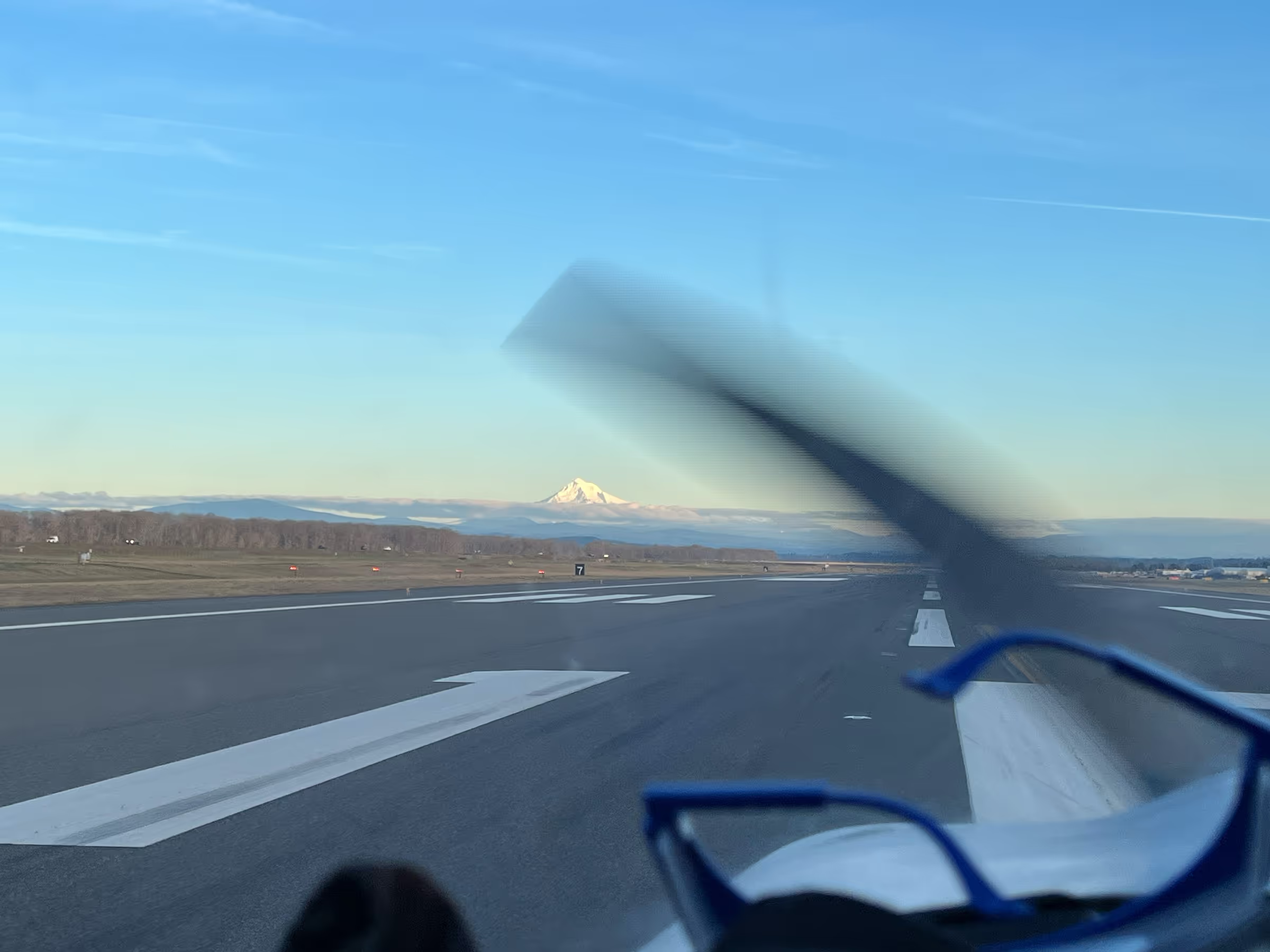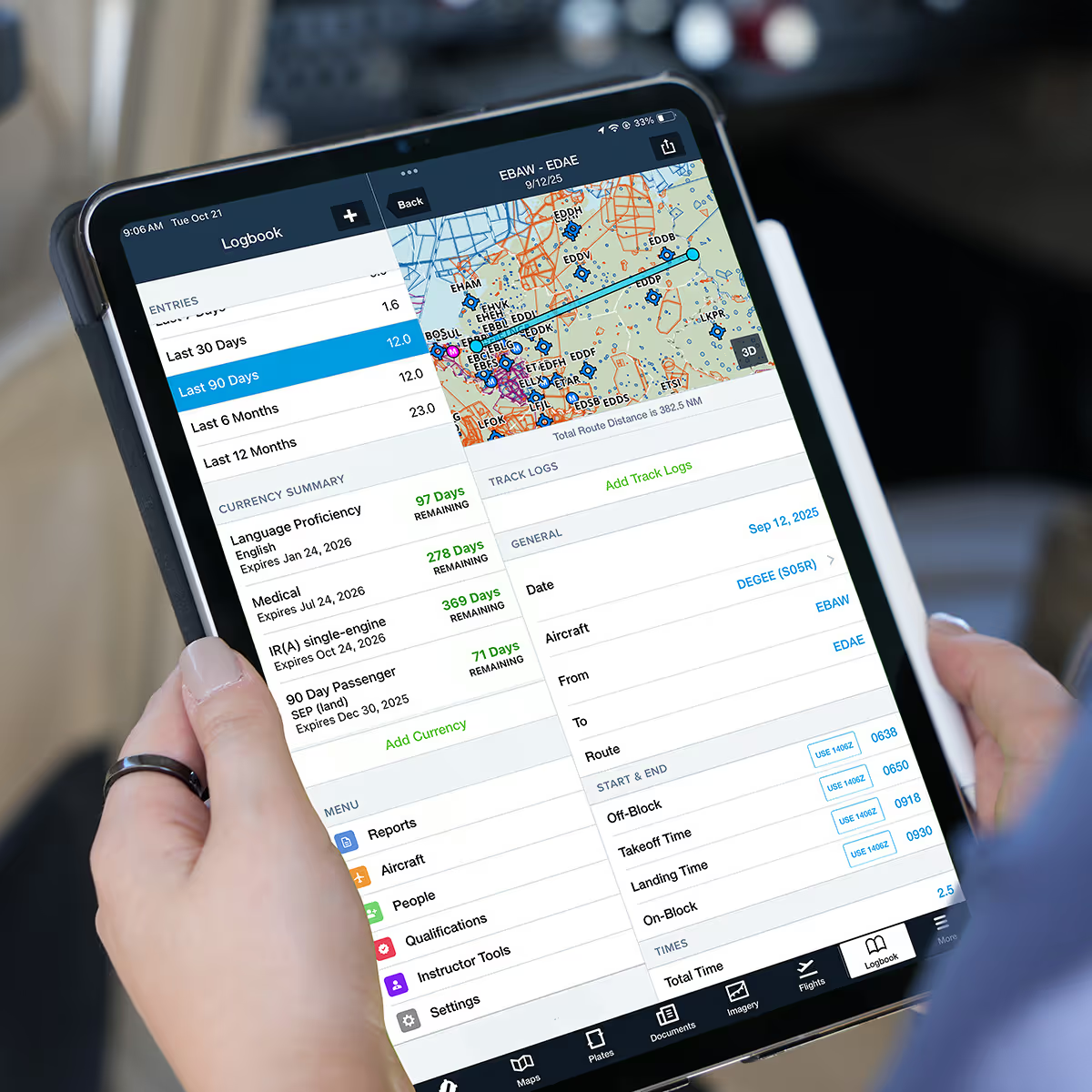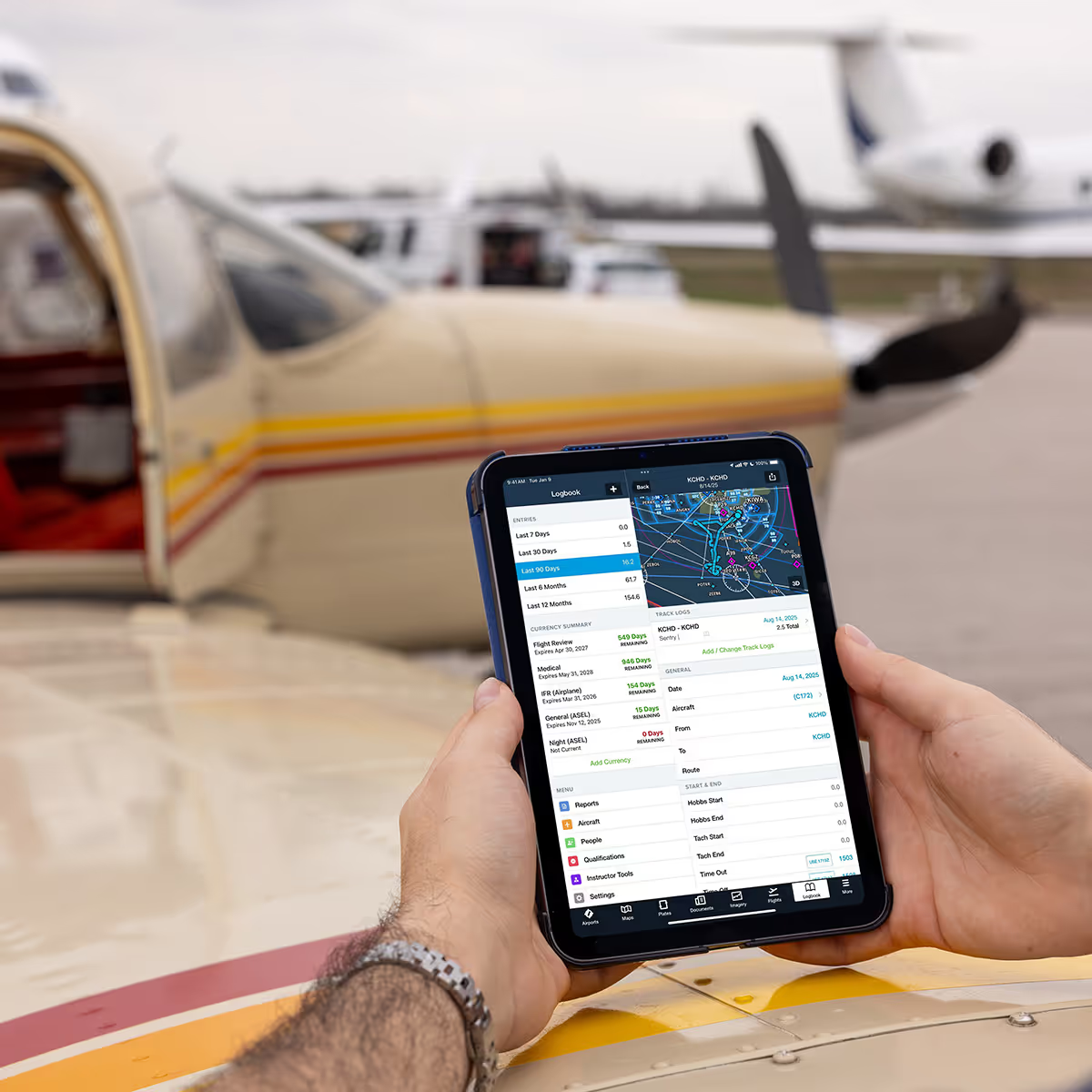On a clear day, the view on approach to Portland International (KPDX) via the ILS to Runway 10L is truly unparalleled (pun intended, given KPDX’s parallel runways). The Columbia River snakes off to the left, dotted with sailboats, as the mouth of the Columbia River Gorge opens up ahead. Mt. Hood stands majestic on the horizon, as picturesque as ever. I had the opportunity to fly this approach during my long instrument cross-country, as required under 14 CFR 61.65(d)(ii). It’s one of many reasons I continue to fall in love with flying in the Pacific Northwest.
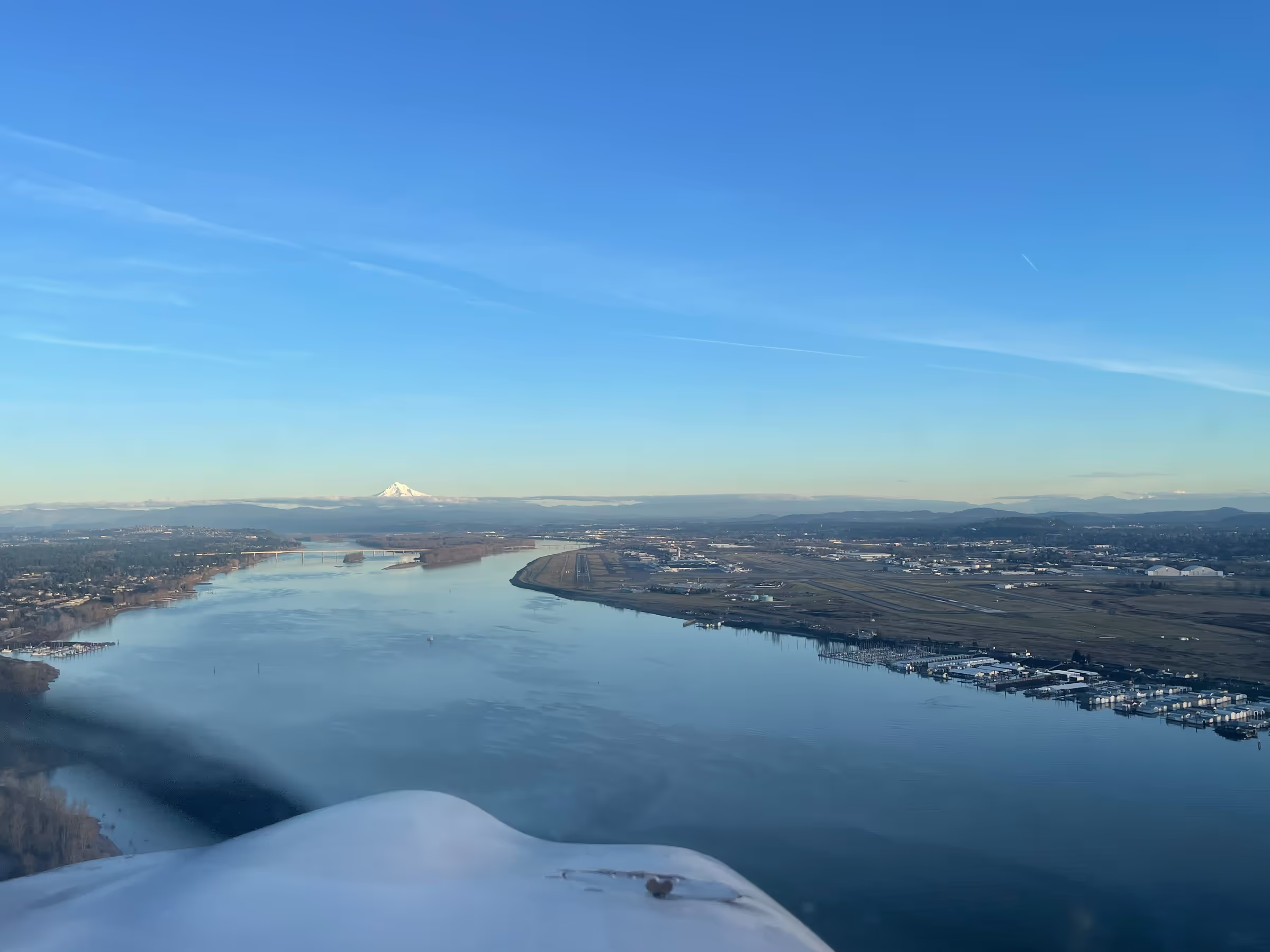
The mental load of an ILS approach
Lots of complexities come with flying an ILS approach, like understanding what navigation frequency to tune into, what the final approach course will be, current weather, and of course the multiple frequencies to communicate directly with KPDX. Additionally, ensuring that altitude minimums aren’t busted and the airplane is not veering too far left or right of course and not too high or too low on glidepath. And in a busy airspace like KPDX, there’s also likely an aircraft on a parallel approach, one ahead, one behind, and one waiting to depart on the ground.
Learning to brief under pressure
During my instrument training, I made great use of Jeppesen plates. I found the layout to be easy to navigate, though I still had to develop my own briefing flow. Briefing on the ground is easier than doing it in the air, where staying ahead of the airplane becomes even more critical. In KPDX’s Class C airspace, where there’s no room for error, I need to stay tightly aligned with the action plan. Layering the approach plate on the map helped, but I still found myself scrolling or zooming to find key details.
Having ForeFlight’s Dynamic Procedure sidebar open makes that so much smoother. Right at the top, I can clearly see the approach I am flying and have the flexibility to change approaches quickly should ATC give me something else (even though they always give the approach according to plan…right?).
Navigation frequencies, the final approach course, touchdown zone elevation (TDZE), landing distance available (LDA), and communication frequencies are all easily accessible right at the top so I can tune and identify quickly. I love that this Sidebar overlays on the map so I can ensure that I know where I am and I am where I’m supposed to be on the approach. Each of the fixes are called out along the way, with critical information like distances, and the decision altitude (DA) called out brightly with a highlighted box. Previously, I had been annotating my own charts with the highlighter function.
There’s even a helpful note that 10L approaches may be authorized alongside traffic on 10R. Good to know to prevent surprises and double check I’m lined up for the correct runway!
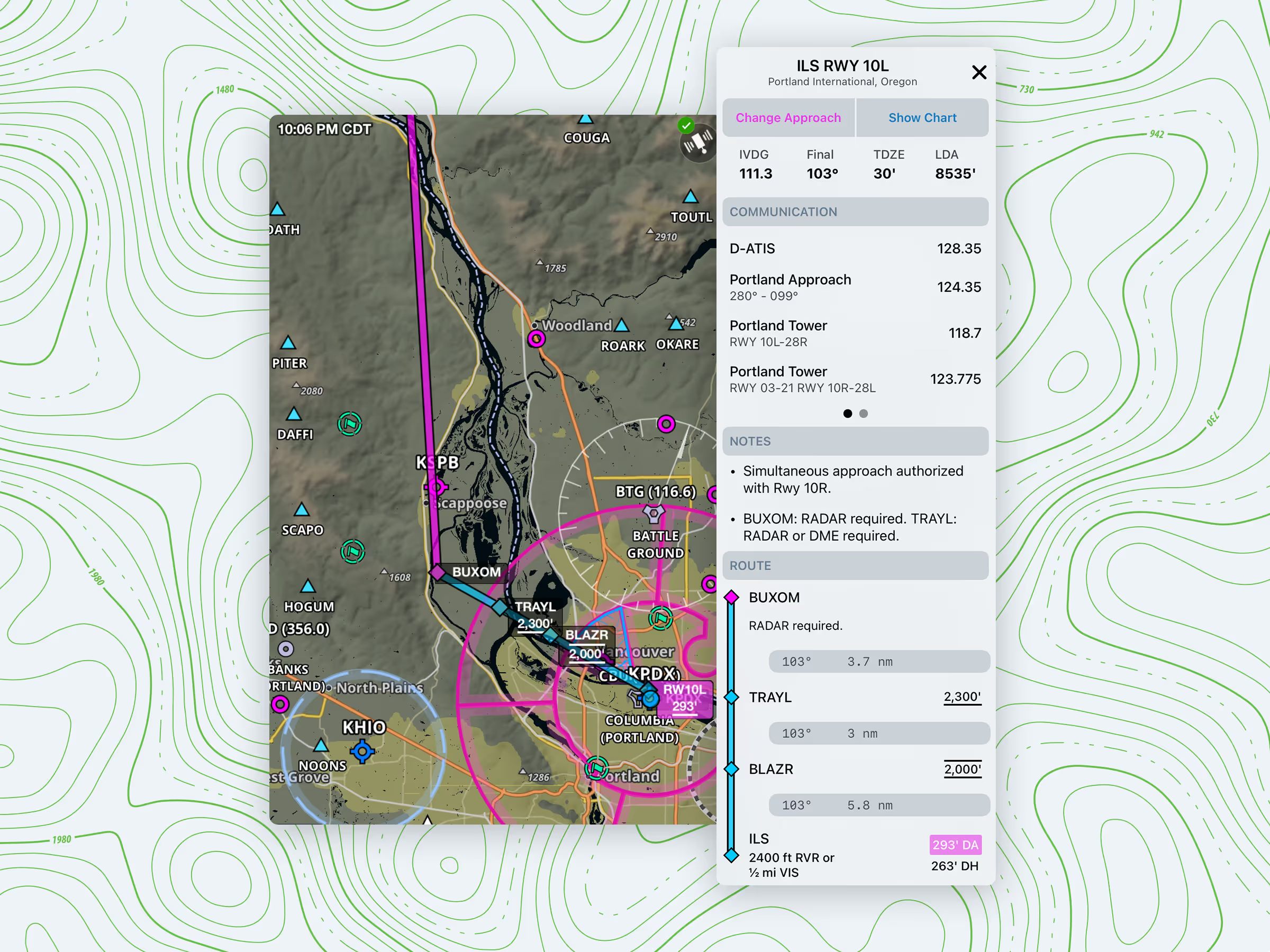
Continuing to scroll, and there’s additional information about what the approach lighting situation looks like, a view of the approach from short final allowing me better visibility to see any potential obstructions, and plain-text detailing out the missed approach procedures.
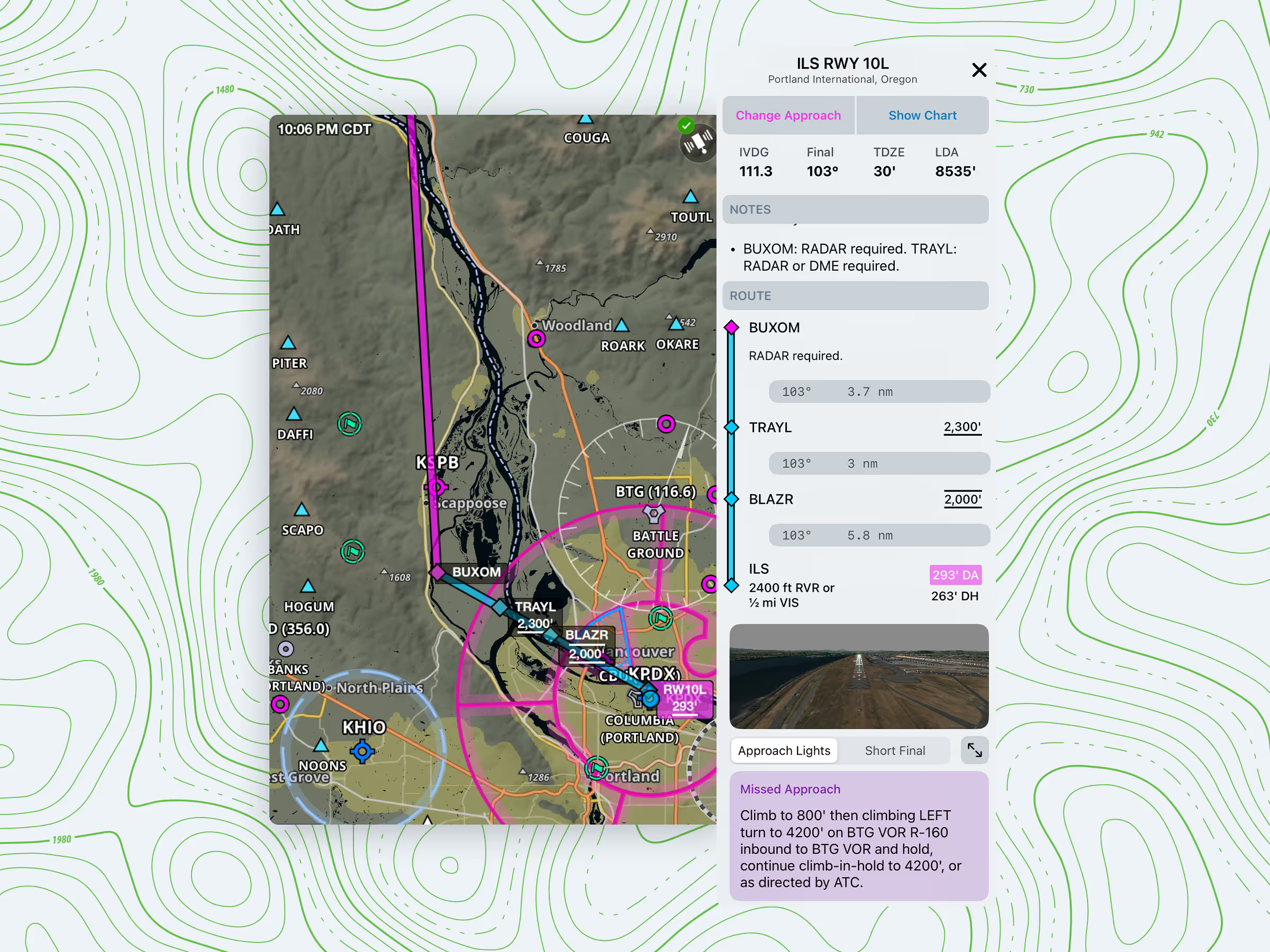
A personal milestone in the sky
While not intended to be a replacement for fully briefing an approach plate, it does minimize page flipping, zooming, and scrolling while in flight, which reduces workload, keeping me ahead of the airplane and in control. The ILS 10L approach to KPDX passes directly over my home airport (KVUO). There’s something satisfying about overflying the airport where I’ve earned my private, instrument, commercial, and advanced ground instructor ratings and where I’m now pursuing my CFI on my way to a successful landing at a major international airport.
